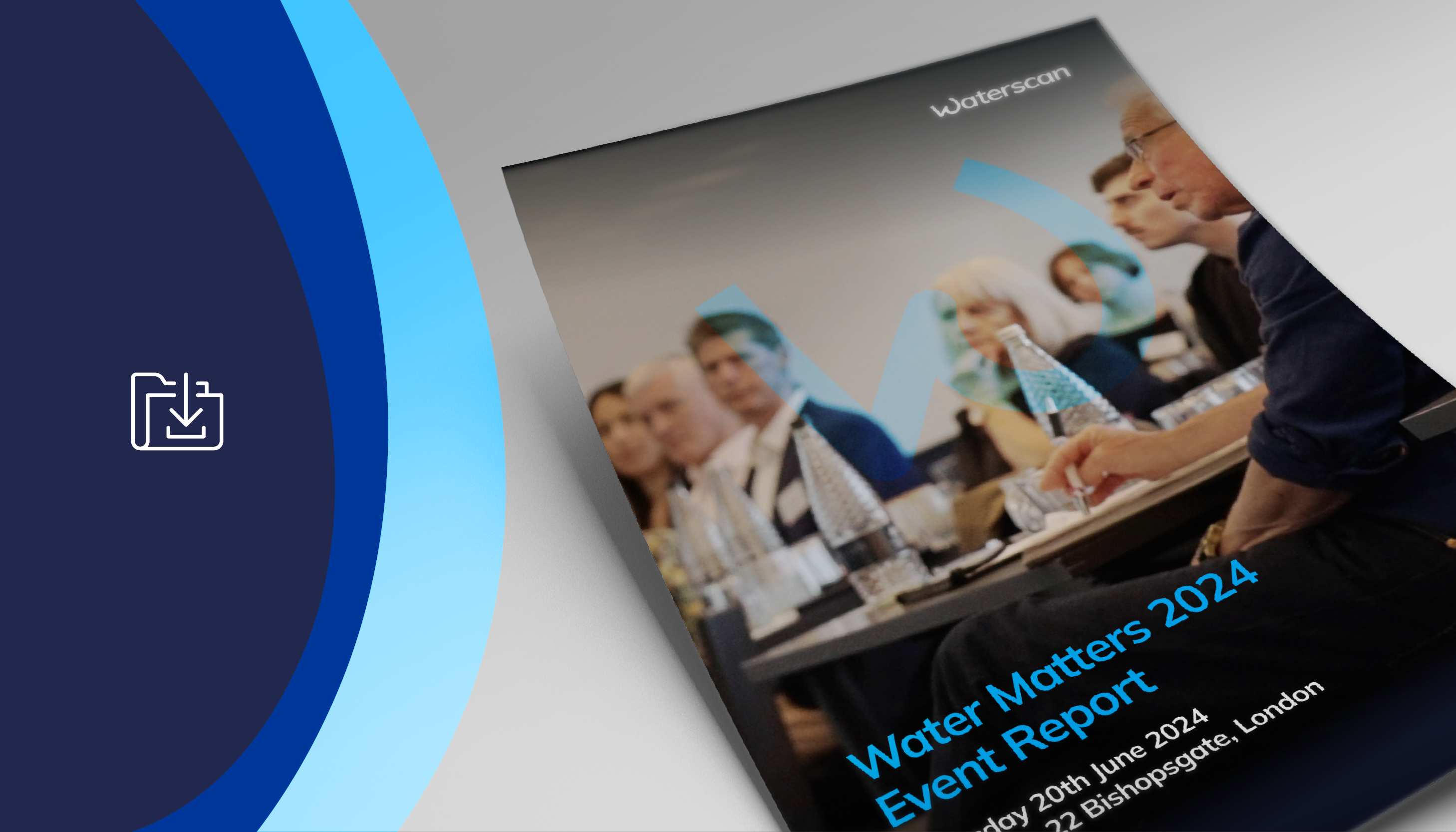An interview with Sainsbury’s Group Utilities Manager*, Sophie Coley. Take a look at Sainsbury’s water journey so far.
Sophie, why does Sainsbury’s want to reduce its water consumption?
As a responsible retailing business, we cannot ignore our impact on the environment. Our CSR Plan for Better is a major driving force for all that we do. It sets out our corporate sustainability agenda across three key areas: Better for You, Better for the Planet, and Better for Everyone.
Water is one of six sub-pillars under our Better for the Planet, in our Plan for Better strategy, putting it on equal footing with environmental impacts that are more talked about, like carbon, plastics and waste. This gives water the focus that it needs within the business and signals that it should be treated in the same way as carbon – something that must be managed carefully. It’s fair to say that water isn’t where carbon is in the business currently, but that’s the ultimate goal.
It’s not widely known just how critical some of our water supplies are, but we do all know the importance of preserving supply. That’s why we are thinking about this now so that we can embrace future supply risks, evolve and adapt with them. It’s early days but we’re in a good place, having commenced a wide-ranging water strategy project which looks at our operations, our supply chain and our overall impact on water, globally.
What has Sainsbury’s achieved to date?
We’ve been working with Waterscan for a number of years now and have made considerable progress on reducing our water consumption. We use one billion fewer litres of water a year now, compared to 2005.
We have also achieved a CDP A rating for water security for three consecutive years. This in turn, has helped boost our CDP climate change disclosure, for which we’ve achieved an A rating for eight consecutive years. We were also the first retailer to be certified with the Carbon Trust Standard for Water.
In 2020, we made the decision to Self-Supply our water in England and now 99.5% of our eligible supply points have transitioned to this model. This is having a big impact on driving efficiency. There was a real gap in our water data, but we now have the most frequent meter reads that we’ve ever had so we can delve into this and begin accurate benchmarking and planning. It has also enabled us to reduce the number of long-unread meters across our estate significantly to just 24 meters, some of which are at vacant sites.
From an operational perspective, we have begun installing water saving taps across the estate and have rainwater harvesting systems in place at 170 sites. Importantly, we have also been tackling leakage, which we have reduced to below 10% of total consumption.
What are your next set of priorities?
We always like to be really ambitious and to lead the way. Initially, our aim was water reduction, but we realised we could do better than that, so we moved quickly to water neutrality, with a goal to be water neutral by 2040.
We recognise that water neutrality focuses on our own operations, and we know that our biggest water footprint is in our supply chain, so we are starting to look at upstream and downstream impacts. We aim to do the best that we can across our estate and then take that wider into catchment level. We have to understand where all our suppliers are on water and whether they’re in a water scarce area because this materially impacts our business. This focus is now driving our water stewardship strategy and our approach to innovation and collaboration as we want to help our suppliers to be more efficient in any way we can.
The move to Self-Supply has helped move our water strategy forward considerably through access to data. It has also given us the opportunity to collaborate with wholesalers. We have more of a say within the water market and can challenge, perhaps influence, changes and strategies. This will be a critical part of our future water strategy.
How do you expect to achieve these goals?
One of the biggest challenges in the past has been access to good, timely data. Water is in a completely different league to data availability for gas and electricity where we get half-hourly reads, but Self-Supply has been a gamechanger for us in terms of visibility and control. If we didn’t have the access to data that we do now through Self-Supply, we would not be able to make the decisions that we are able to and move things forward. Also, we have a very large and quirky estate – including supermarkets, distribution centres, convenience stores, cafes, bakeries and concessions – for which I’m responsible for setting budgets. The more accurate the data I have to work with, the more accurate my budgeting can be across wide-ranging consumption patterns.
Visibility is essential to improve monitoring and drive reductions in consumption and wastage and it enhances benchmarking. It means that we can spot the stores that are using more water than they should be, identify opportunities and accurately monitor the impact of new initiatives and technologies, including our rollout of AMR smart meters and systems to reuse and recycle water.
Going further still, we are now looking at sub-metering at different sites, recognising that different areas within a single supermarket have different consumption and wastage levels. No one supermarket is the same as another, so delving into the depths of this data and analysing it against footfall and customer/colleague behaviour, gives us the opportunity to create confident rationales and focus attention appropriately.
Finally, we are taking a preventative approach to leakage. This is quite a complex process because our estate is big and there are all sorts of pipes so it’s sometimes difficult to identify where the leaks are. A big benefit of our Self-Supply data is that we can help prevent, not just treat, leaks. Previously we wouldn’t know about a leak until we got a massive bill and then we’d have to work out the cause. Now, we can identify fluctuations and tackle something small before it gets bigger. A flooded store would have a major commercial impact and we don’t want to be in that position.
How do you go about obtaining senior management buy-in to move your water strategy forward?
Our corporate Plan for Better has been the biggest driving force. Any efficiency strategy will deliver additional benefits like cost savings, but, ultimately, it’s about recognising that the planet is changing and understanding how we as a business can become resilient to that and effect positive change.
The water data that I now have can be blended with other energy saving programmes to create really robust business models across all of our utilities. It allows me to identify which sites to go after next, and present strong business cases for the management team that demonstrate which actions will have the biggest impacts.
With an estate the size of ours, continual positive behaviour is critical. Colleagues are aware that they need to turn the lights off, but we need to push forward now on water and make sure that everyone is doing all that they can. In energy, we know that we can reduce consumption and we can do the same for water through more awareness and marketing of all the good things that we’re doing. Colleagues and customers can help to be our ‘eyes and ears’ for water wastage.
Water updates are provided to the Board every quarter to hold everyone accountable. We also have biannual formal reporting as well as our annual report and sustainability report. These help to get buy in for the necessary behavioural change to achieve our goals.
And your CDP disclosures help with this too?
Absolutely. CDP holds us accountable and is external recognition of how we’re doing and what we’re striving to achieve. It pushes us forward to continue to get our A rating and to be the best when it comes to water to show others what can be achieved.
It also makes us really consider what we’re doing beyond the business. Reporting in this way is going to be more and more important from a governance perspective and so we have started to request that our suppliers disclose through CDP too.
What learnings can you offer to other large corporate estates with regard to water?
If you don’t understand your own consumption, you can’t drive efficiency in your own business, let alone build a water strategy to mitigate the wider impact that you might be having on the environment. Therefore, good quality data is the most important thing for me. Everything we are doing now stems from having the data to help us make decisions about how to move forward. It enables me to analyse, gain insight, plan for and ultimately achieve the best results for the business and for the environment.
Updated – *Sophie left Sainsbury’s in February 2023




